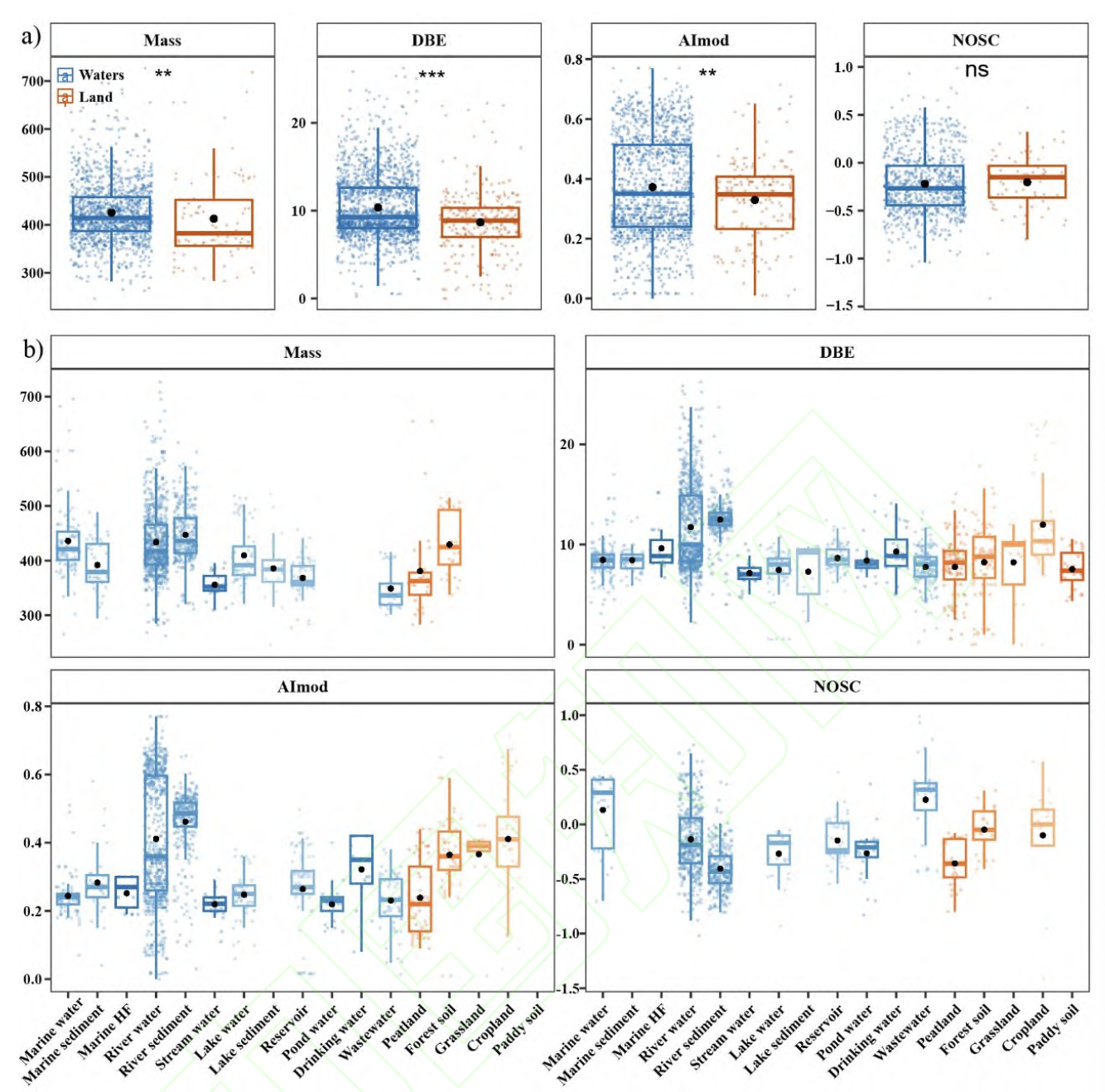We just got a paper on meta analyses of dissovled organic matter (DOM) accepted by Journal of Earth Science. The paper is now published on line by CNKI, and will be available at Journal of Eatch Science in 2025.
Dissolved organic matter (DOM), the largest reactive carbon pool on Earth, is crucial for biogeochemical processes but remains poorly characterized globally in terms of its molecular properties. This study synthesized data from 2,707 sites across 204 publications to analyze four key DOM properties—mass, double bond equivalent (DBE), modified aromaticity index (AImod), and nominal oxidation state of carbon (NOSC). Results showed that water systems had significantly higher mass, DBE, and AImod than land systems, with river sediments having the highest values, while NOSC was highest in wastewater and marine water. In land systems, DOM mass showed stronger positive correlations with oxidation indicators (NOSC, O/C), and NOSC was more strongly linked to bioavailability properties (DBE, AImod, H/C). Spatial patterns revealed increasing NOSC at higher latitudes and mid-latitude peaks in DBE and AImod, driven by environmental factors such as temperature and pH.
Abstract
Dissolved organic matter (DOM) represents the largest pool of reactive carbon on the Earth and plays a crucial role in various biogeochemical processes and ecosystem functions. However, it is understudied for a global understanding of DOM molecular properties such as molecular weight, stoichiometry, and oxidation state, and the linkages among them across Earth systems. Here, a meta-analysis of 2,707 sites in 204 literatures was conducted by synthesizing four representative molecular properties of DOM, i.e., mass, double bond equivalent (DBE), modified aromaticity index (AImod), and nominal oxidation state of carbon (NOSC). By exploring H/C and O/C ratios, we examined the relationships among these DOM properties across waters and land systems, and their geographical patterns and environmental drivers. We found that, compared to land system, the mass, DBE, and AImod were all significantly higher in water systems, with river sediments exhibiting the highest values. DOM oxidation state indicated by NOSC was greater on average in wastewater (NOSC = 0.226 ± 0.06) and marine water (NOSC = 0.133 ± 0.06) than in other habitats. Compared to waters, the mass in land system showed more strongly positive correlations with oxidation states such as NOSC and O/C, and the NOSC showed stronger relations to bioavailability properties such as DBE, AImod, and H/C. Among all the properties, H/C and AImod contributed to the most variations in global DOM properties. In waters, NOSC monotonically increased towards high latitudes, while DBE and AImod showed significant hump-shaped patterns indicating peaked unsaturation and aromaticity at mid-latitudes of approximately absolute 30°–50°. The variations in DOM properties were significantly correlated with environmental factors such as annual mean temperature and pH. Collectively, we revealed the spatial distribution and environmental drivers of DOM molecular properties across Earth ecosystems, which could shed light on our comprehensive understanding of DOM characteristics and its dynamics.
Reference
Han, L., A. Hu, H. L. Mzuka, X. Chen, J. Shen, and J. Wang. 2025. Molecular properties of dissolved organic matter across Earth systems: A meta-analysis. Journal of Earth Science Accepted. DOI: 10.1007/s12583-024-0061-9. [Abstract]
Preprint version: https://doi.org/10.22541/essoar.171224462.20544536/v1


